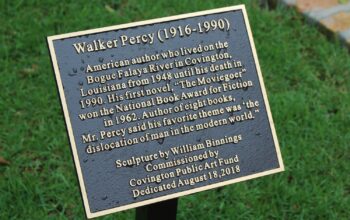For nearly two years, Covington Weekly chronicled the hydraulic fracturing saga in St. Tammany Parish, focusing on the economic development aspect of the issue. What was most puzzling was how projects that are public (receiving a portion of public funding) are not accountable to the public, nor is public input evaluated. Even more confusing was the fact that The Tammany West Chamber of Commerce responded to our first article on behalf of Larry Rase (Director of the Northshore Business Council at the time) and DonahueFavret Contractors, followed by a crafted response from Don Shea, the St. Tammany Parish Director of Economic Development at the time.
In effect, our first article on how economic development occurs in St. Tammany Parish drew the ire of the private business community, who tasked the Chamber with confronting this writer. The Parish then stepped in to issue an official response that was printed the following week. Ironically, the overall response to the CW article perfectly underscored and reinforced the concept of a hierarchy of organizations, all concerned that this writer was suggesting the very behaviors they were exhibiting.
The concept of Dark Money has always been around, but the term was coined specifically to describe a transition of campaign funding methods from traditional Political Action Committees to 501c4 and 501c6 private, non-profit organizations that are not required to disclose financial activity.

The book “Dark Money: The Hidden History of the Billionaires Behind the Rise of the Radical Right” by Jane Mayer details this concept, and the issue is also addressed on the website citizenvox.org in a recent article, “Exposing the U.S. Chamber of Commerce: GOP Dark Money Machine”. The following paragraph is excerpted from their website:
“The Chamber, like other groups organized under section 501(c) of the tax code, is not legally required to disclose the sources of the money it independently spends on elections. It and other dark money groups can serve as conduits for anonymous donations from corporations and other wealthy special interests to flood elections, making it particularly dangerous to democracy.”
The basic threat to the democratic process is the main issue that Covington Weekly has addressed with regard to economic development in St. Tammany Parish, and the groups that took issue with the CW Economic Development Series are the same groups described as Dark Money groups for the purposes of this article.
From the Center for Responsive Politics, “spending by organizations that do not disclose their donors has increased from less than $5.2 million in 2006 to well over $300 million in the 2012 presidential cycle and more than $174 million in the 2014 midterms.” This could easily explain how an incumbent parish president had a quarter of a million dollars in campaign funds while the closest challenger had a mere $5 thousand.
The identification of methods used to subvert democratic principles with money is necessary in order to effectively change such practices. In the political world, money does not represent people nor does it equal free speech; it represents the oligarchy that this Country was escaping from to begin with.
Timothy Achan Gates 985-288-9609 covweekly@gmail.com





